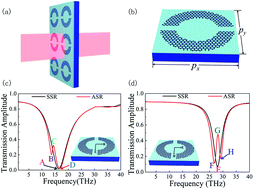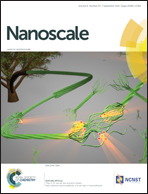Dynamic metamaterial based on the graphene split ring high-Q Fano-resonnator for sensing applications
Abstract
Structured plasmonic metamaterials offer a new way to design functionalized optical and electrical components, since they can be size-scaled for operation across the whole electromagnetic spectrum. Here, we theoretically investigated electrical active split ring resonators based on graphene metamaterials on a SiO2/Si substrate that shows tunable frequency and amplitude modulation. For the symmetrical structure, the modulation depth of the frequency and amplitude can reach 58.58% and 99.35%, and 59.53% and 97.7% respectively in the two crossed-polarization orientations. Once asymmetry is introduced in the structure, the higher order mode which is inaccessible in the symmetrical structure can be excited, and a strong interaction among the modes in the split ring resonator forms a transparency window in the absorption band of the dipole resonance. Such metamaterials could facilitate the design of active modulation, and slow light effect for terahertz waves. Potential outcomes such as higher sensing abilities and higher-Q resonances at terahertz frequencies are demonstrated through numerical simulations with realistic parameters.


 Please wait while we load your content...
Please wait while we load your content...